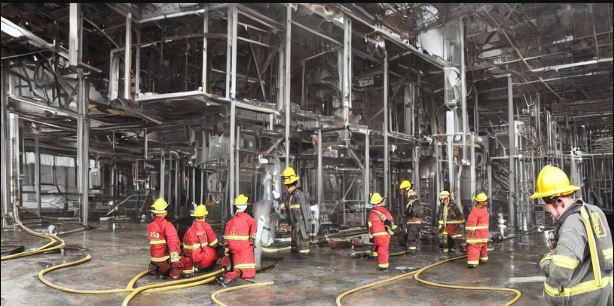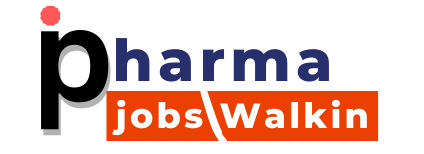Fire Safety Practices in Pharmaceutical Industries are very important to protect the working person inside the factory area. for the best safety proper training and equipment are needed. Later in this article, we will discuss the Common Fire Hazards in Pharmaceutical Industries, and Emergency Response and Evacuation Procedures.

Introduction to Fire Safety Practices in Pharmaceutical Industries
Pharmaceutical industries are highly regulated and the products they manufacture are often life-saving medications that require careful handling and storage. However, with the use of flammable chemicals and high-temperature processes, pharmaceutical facilities pose a significant fire risk. Fire safety practices are critical to protecting the employee and investment. This comprehensive guide will provide an overview of common fire hazards in pharmaceutical industries, fire prevention measures, and emergency response and evacuation procedures. Drug manufacturers may ensure the safety of their personnel and the integrity of their operations by employing these practices.
Common Fire Hazards in Pharmaceutical Industries
- Pharmaceutical manufacturers are susceptible to fire dangers due to the presence of flammable chemicals, gases, and solvents. For example; the storage and handling of flammable liquids such as ethanol, methanol, and acetone are one of the most common fire hazards in the pharmaceutical industry.
- Another common fire hazard in pharmaceutical industries is the accumulation of dust particles. Dust particles from pharmaceutical products can accumulate on surfaces and machinery, creating a potential ignition source. These particles can generate a static charge which may be one of the fire reasons.
- Electrical equipment and wiring also pose a significant fire hazard in pharmaceutical industries. Overloaded circuits, damaged wires, and faulty electrical equipment can cause sparks, which can ignite flammable materials and lead to a fire.
- In addition, wrong garbage disposal of waste products such as paper, cardboard, and packaging materials can create a fire hazard. These materials are flammable and may quickly cause fires, resulting in a dangerous situation.
- It is essential for pharmaceutical industries to identify and address these common fire hazards to prevent accidents and protect lives and investments.
Fire Prevention Measures in Pharmaceutical Industries
Pharmaceutical companies are highly regulated, and severe fire safety practices must be followed. Fire prevention techniques are critical for ensuring employee safety, protecting investments, and preventing property damage. Here are a few useful fire protection measures that pharmaceutical companies can put in place:
- Conducting regular inspections or visits to the facility can help identify potential fire hazards. This includes checking electrical wiring, equipment, and storage areas for any signs of damage or malfunction.
- Proper storage of flammable materials is essential to preventing fires. These materials should be stored in a designated place away from sources of ignition and heat. They must be labeled for easy to identify.
- Installing fire suppression equipment such as sprinklers, fire alarms, and extinguishers can help in the prevention of fires. It is critical to ensure that these systems are frequently maintained and tested to ensure proper operation.
- Employee fire safety training can help avoid fires and minimize damage in the event of an emergency. Employees should be instructed on how to handle dangerous products, use fire extinguishers, and safely.
- Implementing a strict no-smoking policy within the facility can help prevent fires caused by cigarettes or other smoking materials.
By implementing these fire prevention measures, pharmaceutical industries can significantly reduce the risk of fires and protect their employees, investments, and property.
Related: Housekeeping Audit checklist
Emergency Response and Evacuation Procedures in Pharmaceutical Industries
- It is critical to have adequate emergency response and evacuation procedures in place in the case of a fire. These procedures are even more important in the pharmaceutical industry, where hazardous compounds are present.
- The first step in emergency response is to sound the alarm and inform all facility workers. This can be done by an automated system or by persons who have been trained to handle such situations. Employees should right away stop all work and follow the approved evacuation procedures once the alarm has been noticed.
- Evacuation routes should be clearly marked and easily accessible. Employees should be trained on the location of emergency exits and assembly points outside the building. It is also important to have designated personnel who are responsible for assisting individuals with disabilities or injuries during the evacuation process.
- During an evacuation, it is essential to remain calm and follow instructions from designated personnel. Employees should not attempt to retrieve personal belongings or re-enter the building until given permission by the appropriate authorities.
- After the evacuation, it is important to conduct a headcount to ensure that all personnel has safely evacuated the building. Emergency responders should be notified of any missing individuals or potential hazards that may impede their efforts.
- Regular training and drills should be conducted to ensure that all employees are familiar with the emergency response and evacuation procedures. By having effective procedures in place and ensuring that all personnel is properly trained, pharmaceutical industries can protect both lives and investments in the event of a fire.
